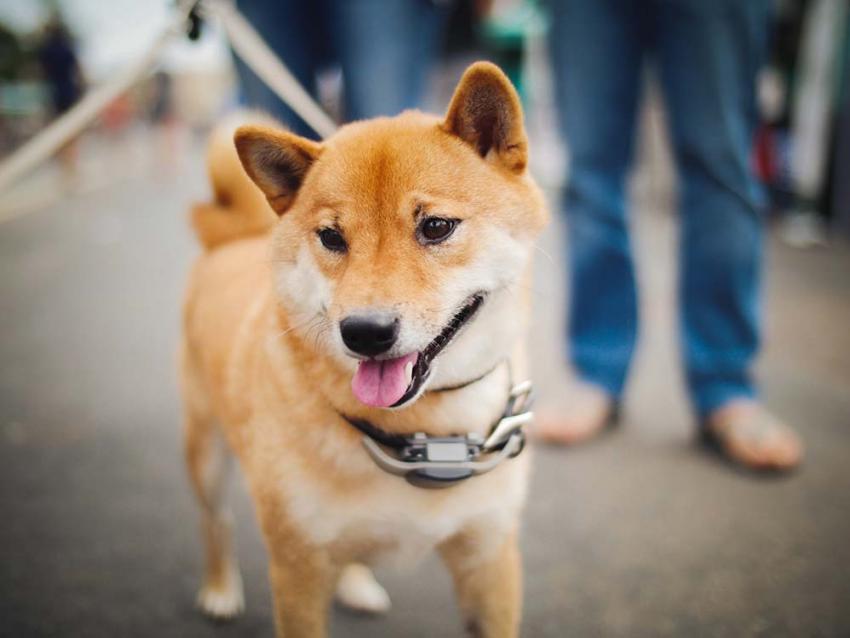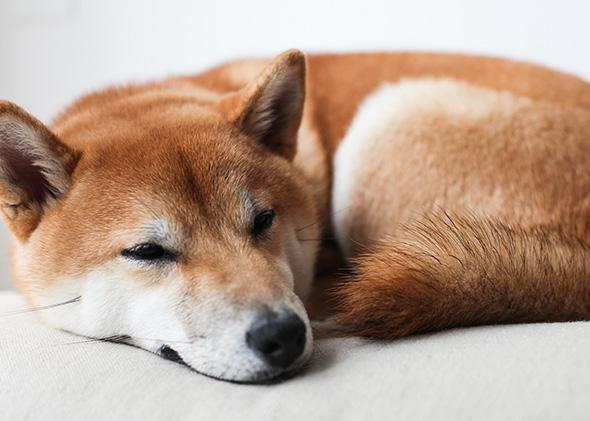Other Names: Japanese Shiba Inu, Japanese Small Size Dog, Japanese Brushwood Dog, Japanese Turf Dog, Shiba Ken.
The Shiba Inu is a Japanese breed of hunting dog. A small-to-medium breed, it is the smallest of the six original and distinct spitz breeds of dog native to Japan.
A small, alert and agile dog that copes very well with mountainous terrain and hiking trails, the Shiba Inu was originally bred for hunting. It looks similar to and is often mistaken for other Japanese dog breeds like the Akita Inu or Hokkaido, but the Shiba Inu is a different breed with a distinct bloodline, temperament, and smaller size than other Japanese dog breeds.
Appearance

The Shiba’s frame is compact with well-developed muscles. Males are 35 to 43 cm (14 to 17 in) at the withers. Females are 33 to 41 cm (13 to 16 in). The preferred size is the middle of the range for each sex. Average weight at preferred size is approximately 10.5 kg (23 lb) for males, 8 kg (18 lb) for females. Bones are moderate.
The Shiba is double-coated, with the outer coat being stiff and straight and the undercoat soft and thick. The fur is short and even on the fox-like face, ears, and legs. Guard hairs stand off the body and are about 4 to 5 cm (1 1⁄2 to 2 in) long at the withers. The purpose of the guard hairs is to protect their underlying skin and to repel rain or snow. Tail hair is slightly longer and stands open in a brush. Their tails are a defining characteristic and make them stand apart from other dog breeds. Their tails help to protect them from the harsh winter weather. When they sleep, Shiba Inus curl up and use their tails to shield their face and nose in order to protect their sensitive areas from the cold. Shibas may be red, orange, yellow, black and tan, or sesame (red with black-tipped hairs), with a cream, buff, or grey undercoat. They may also be white (cream), though this colour is considered a “major fault” by the American Kennel Club and should never be intentionally bred in a show dog, as the required markings are known as “urajiro” are not visible; “Urajiro” literally translates to “underside white”. Conversely, a white (cream) coat is perfectly acceptable according to the British Kennel Club breed standard.
The urajiro (cream to white ventral colour) is required in the following areas on all coat colours: on the sides of the muzzle, on the cheeks, inside the ears, on the underjaw and upper throat inside of legs, on the abdomen, around the vent and the ventral side of the tail. On reds: commonly on the throat, fore chest, and chest. On blacks and sesames: commonly as a triangular mark on both sides of the fore chest.
History
The Shiba Inu has been identified as a basal breed that predates the emergence of the modern breeds in the 19th century.
Originally, the Shiba Inu was bred to hunt and flush small game, such as birds and rabbit. Shiba lived in the mountainous areas of the Chūbu region. During the Meiji Restoration, western dog breeds were imported and crosses between these and native Japanese breeds became popular. From 1912 to 1926, almost no pure Shiba remained. From around 1928, hunters and intellectuals began to show interest in the protection of the remaining pure Shiba; however, despite efforts to preserve the breed, the Shiba nearly became extinct during World War II due to a combination of food shortage and a post-war distemper epidemic. All subsequent dogs were bred from the only three surviving bloodlines. These bloodlines were the Shinshu Shiba from Nagano Prefecture, the Mino Shiba from the former Mino Province in the south of present-day Gifu Prefecture, and the San’in Shiba from Tottori and Shimane Prefectures.
The Shinshu Shibas possessed a solid undercoat, with a dense layer of guard-hairs, and were small and red in colour. The Mino Shibas tended to have thick, prick ears, and possessed a sickle tail, rather than the common curled tail found on most modern Shibas. The San’in Shibas were larger than most modern shibas, and tended to be black, without the common tan and white accents found on modern black-and-tan shibas. When the study of Japanese dogs was formalized in the early and mid-20th century, these three strains were combined into one overall breed, the Shiba Inu. The first Japanese breed standard for the Shiba, the Nippo Standard, was published in 1934. In December 1936, the Shiba Inu was recognized as a Natural Monument of Japan through the Cultural Properties Act, largely due to the efforts of Nippo (Nihon Ken Hozonkai), the Association for the Preservation of the Japanese Dog.
In 1954, an armed service family brought the first Shiba Inu to the United States. In 1979, the first recorded litter was born in the United States. The Shiba was recognized by the American Kennel Club in 1992 and added to the AKC Non-Sporting Group in 1993. It is now primarily kept as a pet both in Japan and abroad. According to the American Kennel Club, the Shiba Inu is the number one companion dog in Japan. In the United States, the growing popularity of the Shiba Inu is evident as the American Kennel Club Registration Statistics ranked the breed in 44th place in 2016; a rise from 50th place in 2012
